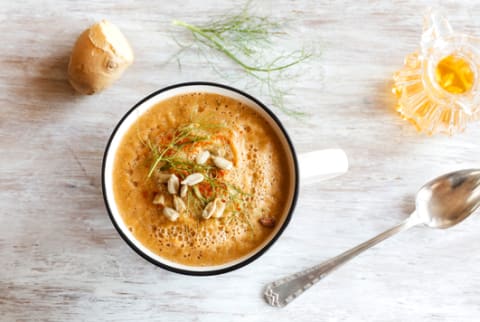Advertisement


According to Ayurveda, India's ancient modality of health and healing, our health is about more than the absence of disease. It's a fruitful, flourishing state of well-being. To tap into this abundant resource, we start by transforming ourselves from the inside out.
Take a look at your kitchen cupboard. Become aware about the decisions you're making when you eat. When we choose, for example fresh vegetables and fruits instead of stale packaged foods, we nourish our physical and mental health.
Stale food can actually contribute to feelings of sadness and even anxiety and depression. On the other hand, fresh foods awaken the senses. The experience of cooking reminds us that food is a celebration of seasons and festivities of color, texture, aroma, and divinity. It is a thing to be enjoyed and an exercise in mindfulness.
As a child, I don't remember my mother storing leftovers. Food was given to kitchen helpers, the poor and needy, and visitors—including animals. My mother would greet them with fresh snacks or meals she rustled up in the kitchen. It is a pleasant memory, and one that continues to affect how I eat today.
Even if you didn't have the same upbringing, you can change your past by modifying your present.
Promote positive change simply by adding something favorable and eliminating something toxic from your diet. For example, find ways to incorporate good-for-you foods such as mung lentils, or green gram; homemade Ayurvedic buttermilk; clarified butter, or ghee (Ayurvedic clarified butter); and good spices like turmeric, cumin, fennel, and ginger. Stop or reduce harmful foods from your diet such as toxin-generating foods like yogurt, cheese, processed foods, and cold foods like raw salads.
Not sure where to start? Try this delicious recipe for ayurvedic lentil soup.
Mung Bean Lentil Soup
Ingredients:
- 1 tablespoon ghee
- 2 cups whole mung beans, soaked in 4 cups water for at least 3 hours or overnight*
- 12 cups water
- ½ teaspoon ground black pepper
- ½ teaspoon ground ginger
- ½ teaspoon ground cumin seed
- ¼ teaspoon rock salt (plus more, to taste)
- 1 teaspoon lime juice (optional)
- 2 teaspoons minced cilantro
*mung beans are a type of lentil
Method:
1. Heat a large stockpot on medium-high heat, add ghee, and then add the presoaked and drained mung dal. Sauté until the lentils are slightly brown and mildly aromatic.
2. Add 12 cups water and boil until the mung beans are fully cooked and individual grains begin to lose integrity, 30 to 40 minutes, or longer if required.
3. Add black pepper, ginger, cumin, and salt. Use a ladle to mash the lentils fully to get a porridge-like consistency.
4. Add lime juice and garnish with cilantro.
Eat while hot.
Get more of Acharya’s insights on Ayurvedic living in her new book, Ayurveda Lifestyle Wisdom: A Complete Prescription to Optimize Your Health, Prevent Disease, and Live with Vitality and Joy